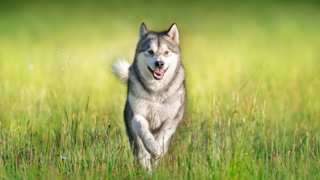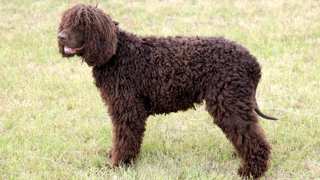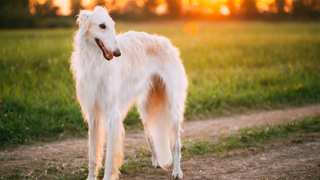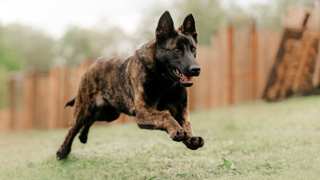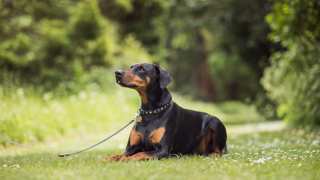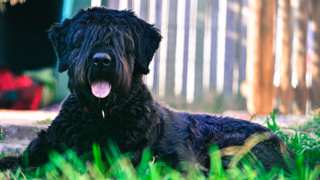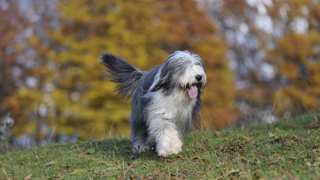As a large, active breed, a Giant Schnauzer's diet is the primary key to keeping a dog of this breed happy, healthy, and long-living. Giant Schnauzer food will need to have plenty of animal proteins and carbohydrates for energy, vitamins and minerals for digestive and immune health, and omega fatty acids for coat and skin wellness. The most popular and sensible food choice for these dogs is premium dry food, because it contains balanced amounts of the above-listed ingredients; Royal Canin Maxi and Fromm Large Breed Adult Gold are two recommended brands. These high-quality foods, while more expensive and difficult to obtain, provide the balanced nutrition your Giant Schnauzer will need in the long term. Cheap, generic foods are not recommended for these dogs, because they contain mostly empty, "filler" ingredients that simply won't sustain your dog--and may even shorten its lifespan.
And just how much food will your Giant Schnauzer need each day? The typical adult Giant Schnauzer, depending on its age, size, and activity level, will need about four cups of premium dry food per day, divided into two meals. Puppies will need a bit less: again depending on its age, a Giant Schnauzer pup will need about 2½ cups per day, divided into three meals (not two) until six months old. For more info on feeding a Giant Schnauzer from puppyhood through maturity, see the following chart:
Giant Schnauzer Feeding ChartDog AgeDog WeightFood TypeAmountFrequency2 Months12 lbsDry (Puppy formula)0.4 cups3x/day3 Months20 lbsDry0.6 cups3x/day6 Months35 lbsDry0.8 cups3x/day9 Months55 lbsDry* (Puppy/Adult)1.5 cups2x/day12 Months+70 lbsDry (Adult formula)2 cups2x/day*--Around this time, transition to adult food by first mixing in just a little adult formula with the puppy formula. Over the course of a week, with each meal add a bit more adult food to the mixture, until the dog is eating it entirely.
If possible, try and stick to the above-listed portions; while your Giant Schnauzer could probably eat a lot more, constantly overfeeding these dogs can result in obesity--and a fat Giant Schnauzer will have joint, breathing, and digestive issues, not to mention a shorter lifespan. You can control your dog's weight in several ways: by establishing consistent feeding and exercise schedules, by not feeding the dog table scraps, and by not leaving food in its bowl all the time, thereby allowing the dog to eat anytime it wants. It's better to put your Giant Schnauzer's bowl down only at mealtimes, then pick it up 20 minutes or so after the dog begins eating.
If you're worried your Giant Schnauzer is overweight, give the dog this simple test: run a hand along its side, and if you can't feel any ribs, it's diet time. And just as with humans, the "eat less, move more" principle applies to canine weight loss. Reduce your Giant Schnauzer's daily food consumption by one-fourth, and add an extra walk or play period to its daily exercise schedule.

